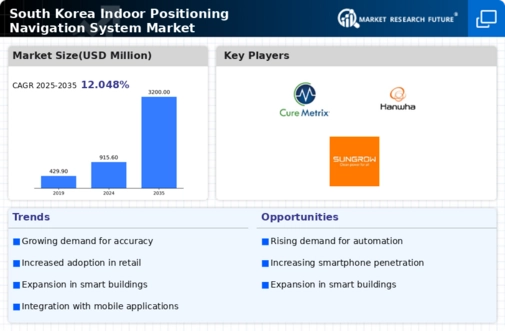The South Korea Indoor Positioning Navigation System Market is evolving rapidly, as the demand for accurate location-based services in various industries continues to grow. This market is characterized by a competitive landscape marked by technological advancements, innovations, and strategic partnerships.
The rising penetration of smartphones and increased use of IoT devices have further fueled the growth of indoor positioning systems. Stakeholders are increasingly focused on enhancing user experience by improving the accuracy and reliability of their solutions, which is leading to the emergence of new players entering the market.
Understanding the competitive dynamics, including the strategic initiatives of various companies, is vital for stakeholders to navigate this complex landscape effectively.
The Seoul Metropolitan Government plays a crucial role in the South Korea Indoor Positioning Navigation System Market by promoting initiatives that support urban mobility and smart city infrastructure. This government body is committed to enhancing the technological framework of the city to provide citizens and visitors with improved navigation and locational services.
With strong investments in digital technologies and data collaboration, the Seoul Metropolitan Government enhances the usability of indoor navigation systems. Its focus on collaboration with technology providers and universities fosters an ecosystem conducive to innovation and development.
The government's proactive approach, characterized by its public-private partnerships, helps to create a thriving environment for indoor positioning solutions, thus establishing a significant foothold in the market.
LG Electronics stands as a prominent player in the South Korea Indoor Positioning Navigation System Market, capitalizing on its extensive expertise in technology and consumer electronics. The company focuses on developing innovative solutions that integrate indoor navigation capabilities with its range of smart appliances and consumer products.
LG Electronics leverages its advanced communication technologies and sensors to deliver state-of-the-art positioning systems that cater to various sectors such as retail, healthcare, and transportation. It has also made strategic acquisitions and partnerships that bolster its position within the market.
The company’s strengths lie in its robust research and development capabilities, ensuring it remains at the forefront of innovation in indoor positioning technologies. Its commitment to creating user-centric solutions has positioned LG Electronics favorably in the competitive landscape, allowing it to capture significant market share within South Korea.














Leave a Comment